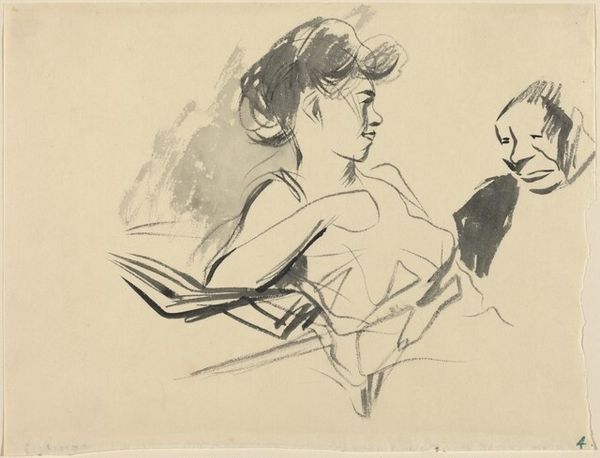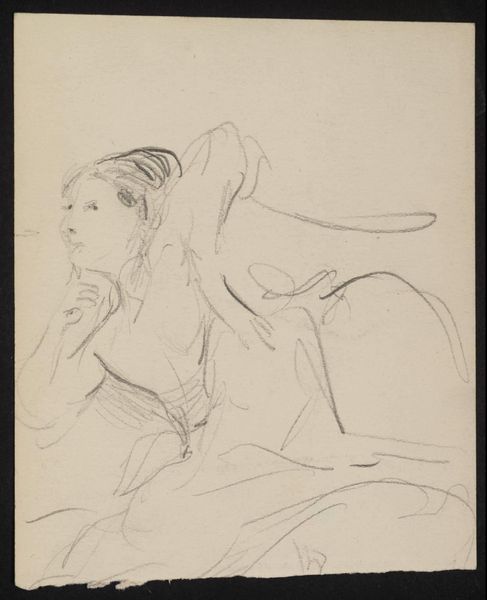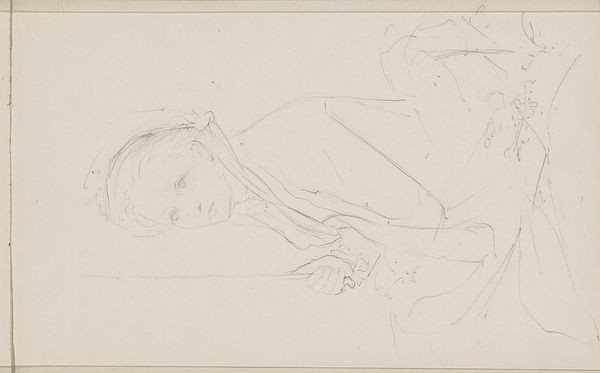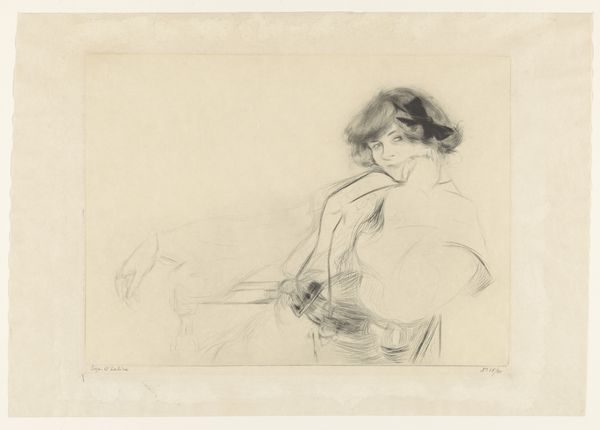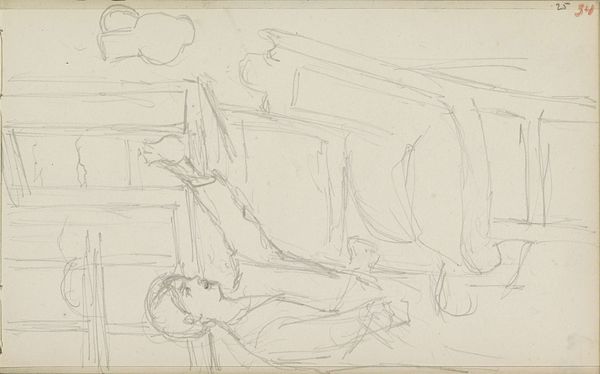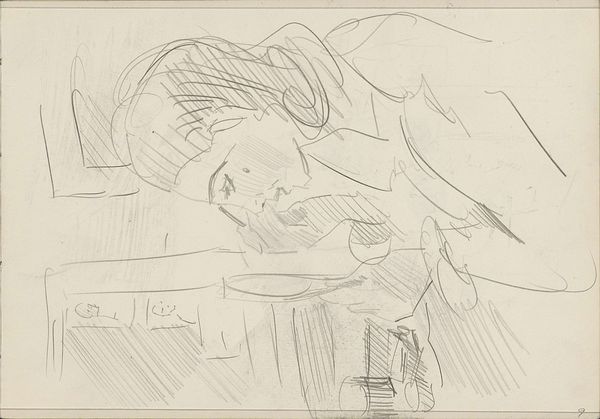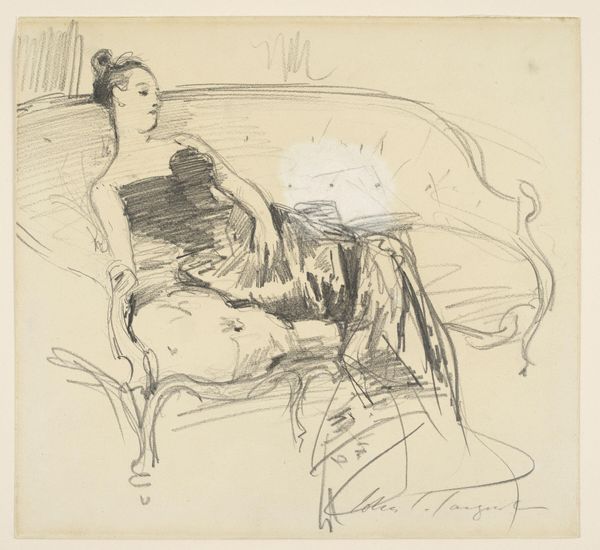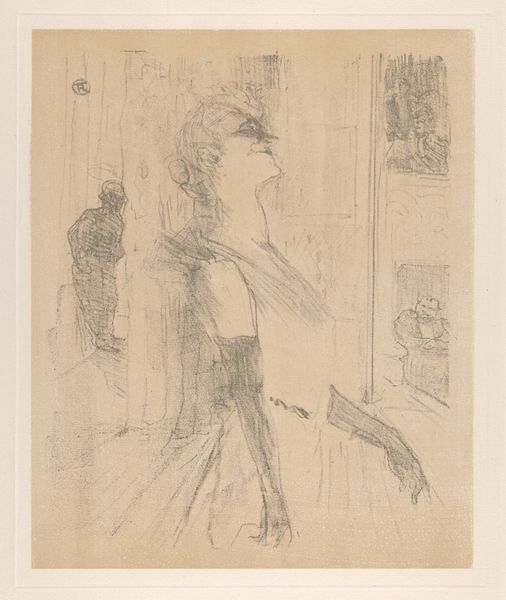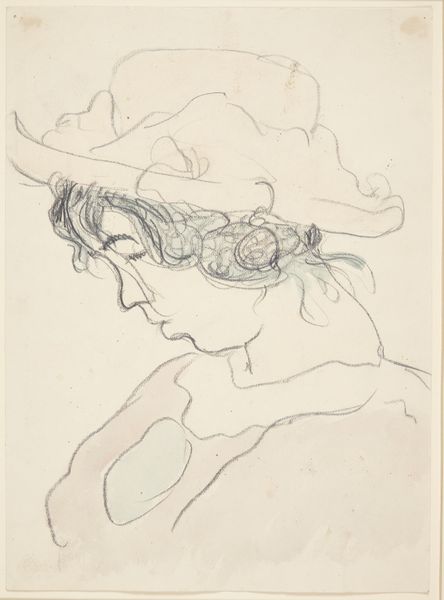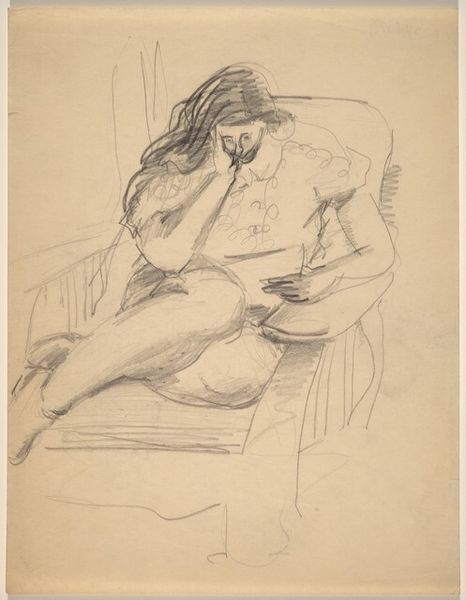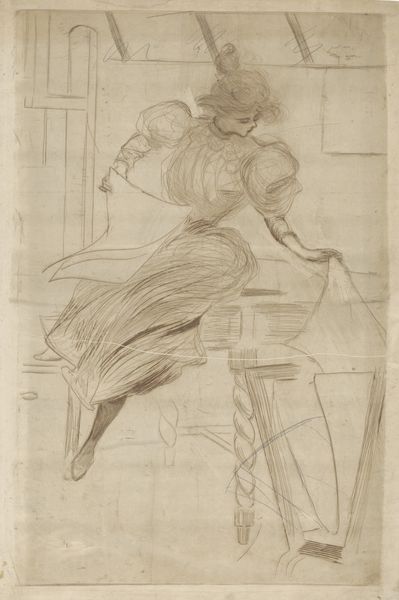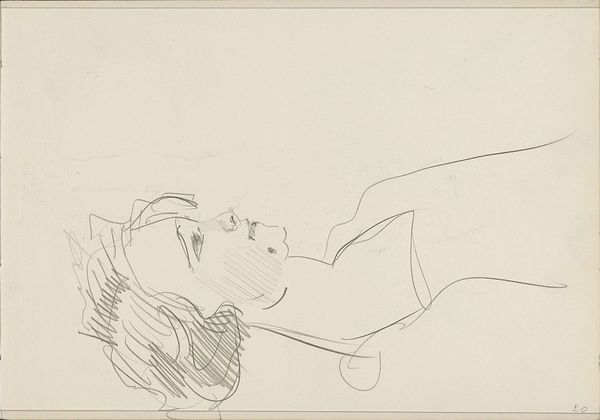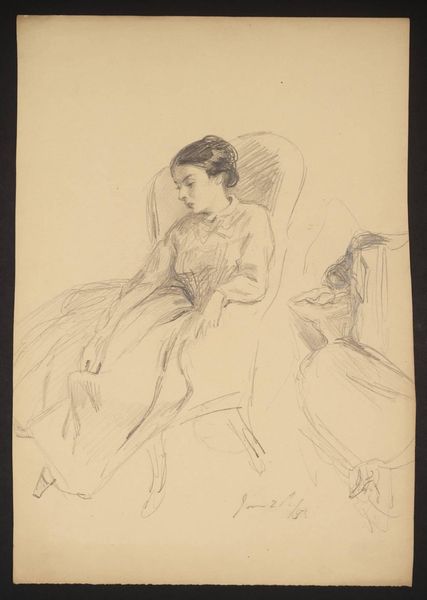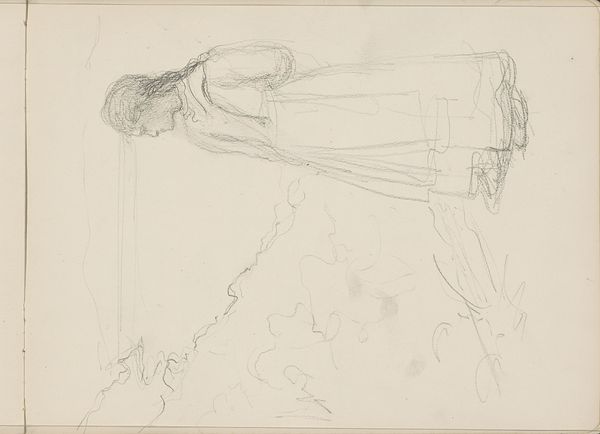
drawing, print, ink
#
portrait
#
drawing
# print
#
impressionism
#
ink
#
portrait drawing
Dimensions: plate: 32.39 × 25.24 cm (12 3/4 × 9 15/16 in.) sheet: 32.4 x 25.4 cm (12 3/4 x 10 in.)
Copyright: National Gallery of Art: CC0 1.0
Editor: This is Mary Cassatt’s “The Lamp,” created between 1890 and 1891. It’s an ink and print drawing, a portrait. The composition has an unfinished quality, especially with all of the sketchy lines that seem to be searching for definition. What do you see in this piece? Curator: The sketch-like quality you mention is precisely where its intrigue lies. Observe how the lines, though sparse, delineate distinct spatial planes. The lamp, imposing and high, is grounded against the sitter through subtle diagonals of gazes and body language. Note also how the strategic use of contour--thickened in areas to suggest shadows--constructs both form and mood. Editor: So, you're focusing on the lines, and the shapes that those lines are creating, almost as if the content of the artwork does not matter? Curator: I'm arguing that the subject matter of art does not define it. Note, for example, how the artist repeats line to create the cushion seat and lamp; the form communicates balance in the same way. Editor: But isn't there an element of intimacy in portraying a domestic scene? Curator: Perhaps, but the very lines deny a concrete story, encouraging instead our own interpretation. Consider the textural contrasts too – the smooth skin against the feathery lamp shade. Are we not, in this manner, invited into a world of visual possibilities through these opposing textures? Editor: That’s fascinating! So even though it appears simple, the relationships between line, form, and texture offer much more than meets the eye. Curator: Precisely. Form creates an invitation to experience art!
Comments
No comments
Be the first to comment and join the conversation on the ultimate creative platform.
